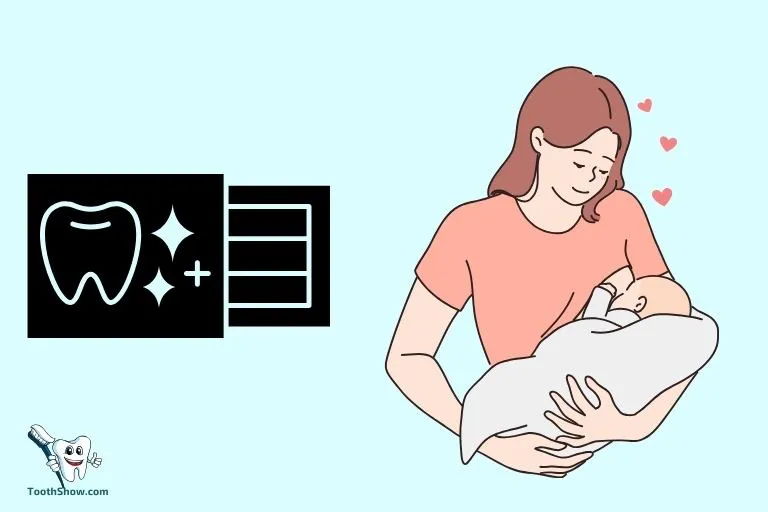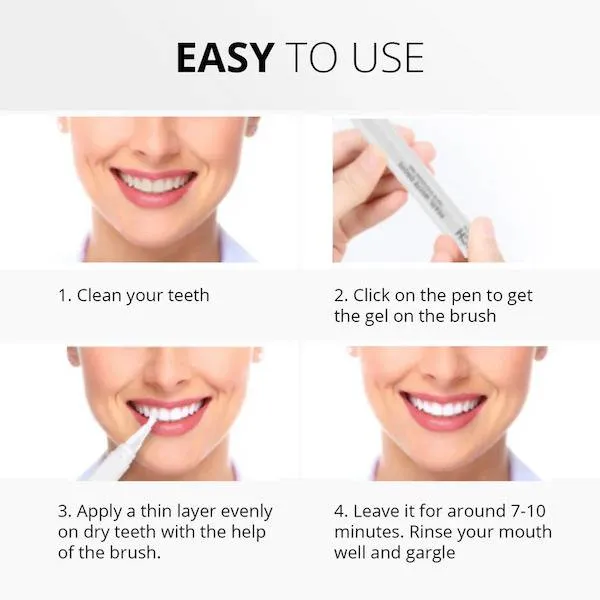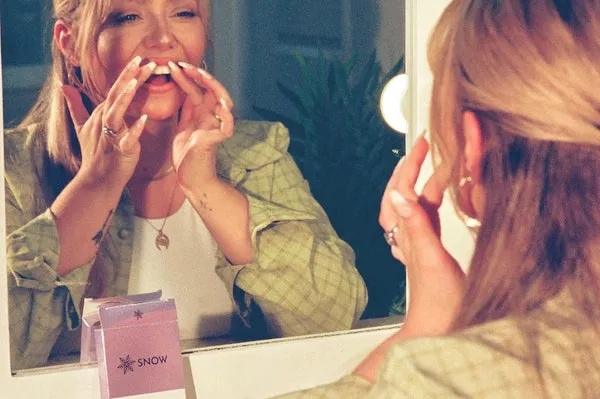Understanding the Safety of Teeth Whitening
Teeth whitening is a popular cosmetic procedure, but its safety during breastfeeding requires careful consideration. As a nursing mother, you are responsible for everything that goes into your body, as it can affect your baby through breast milk. The active ingredients in teeth whitening products, such as hydrogen peroxide and carbamide peroxide, can be absorbed into the bloodstream. Therefore, understanding how these substances may impact your baby’s health is critical. Before embarking on any teeth whitening journey while breastfeeding, it is important to evaluate the potential risks and benefits.
Potential Risks for Breastfeeding Mothers
The primary concern with teeth whitening while breastfeeding revolves around the potential for the whitening agents to be absorbed and transferred to the baby through breast milk. Although the exact impact of these chemicals on infants is still being researched, it is generally advised to err on the side of caution. The most common risks involve the possibility of the baby ingesting the whitening agents through breast milk. This could lead to gastrointestinal issues or other sensitivities in the infant. The concentration and frequency of the whitening treatments will affect the risks, so discussing all options with your doctor is important.
The Impact of Whitening Agents

Hydrogen peroxide and carbamide peroxide are the main active ingredients in most teeth whitening products. These chemicals work by breaking down stains on the enamel of your teeth. The concentration of these agents varies widely depending on the product. Higher concentrations typically lead to faster results but may pose a greater risk. When ingested, these chemicals can cause irritation and, in large doses, may have adverse effects on the baby’s developing systems. Therefore, choosing products with lower concentrations of these agents is generally safer when breastfeeding. Always read the product labels carefully and discuss any concerns with your dentist or healthcare provider.
Consulting with Healthcare Professionals
Before deciding to whiten your teeth while breastfeeding, consulting with both your dentist and your pediatrician is vital. These professionals can provide tailored advice based on your individual health situation and the baby’s needs. Your dentist can evaluate your teeth and gums, recommend safe whitening options, and discuss any potential risks. Your pediatrician can give insights into your baby’s health and potential reactions to whitening agents in breast milk. They can help you weigh the pros and cons and make an informed decision that prioritizes both your and your baby’s health. Communication with healthcare providers will help ensure a safer experience.
Safer Whitening Options
If you’re breastfeeding and seeking to whiten your teeth, some safer options exist. Whitening toothpastes containing mild abrasives can help remove surface stains. However, be aware that these may not provide the same dramatic results as stronger whitening treatments. Another option is to explore products with lower concentrations of hydrogen peroxide. These may take longer to show results, but they pose fewer risks. Always check with your dentist or healthcare provider to confirm the safety of any product you consider. In some cases, delaying whitening treatments until after you have weaned your baby might be the safest course of action.
Professional Teeth Whitening

Professional teeth whitening treatments administered by a dentist offer more controlled and often more effective results. However, even these treatments require caution while breastfeeding. Dentists can adjust the concentration of the whitening agents to minimize risk. They can also use protective measures, such as rubber dams, to prevent excessive exposure. If you are considering professional whitening, discuss the risks and benefits with your dentist. They can assess your specific situation and recommend the safest approach for both you and your baby. Always prioritize open communication with your dentist to ensure a safe experience.
At-Home Whitening Methods
At-home teeth whitening kits vary widely in their ingredients and strengths. Some kits use custom-fitted trays and whitening gels, while others involve strips or pens. While these methods may be more convenient, they often carry higher risks during breastfeeding due to the potential for improper use or the use of stronger concentrations of whitening agents. If you choose an at-home method, always carefully follow the instructions. Choose products that are specifically designed for sensitive teeth. Be aware of the ingredients and their potential impact on your baby. When in doubt, it is best to consult your dentist or healthcare provider before use to avoid any potential complications.
Essential Safety Tips
When whitening your teeth while breastfeeding, prioritize these safety tips: choose products with lower concentrations of hydrogen peroxide, consult your dentist and pediatrician, carefully follow all instructions, avoid swallowing any whitening agent, and discontinue use if you notice any adverse reactions. Another crucial tip is to ensure good oral hygiene. Brushing and flossing regularly can help maintain your teeth’s natural whiteness and reduce the need for frequent whitening treatments. These steps will help minimize any potential risks and promote the safety of both you and your baby. Your health and your baby’s well-being should always be your top priorities.
Prioritizing Breastfeeding Safety

Breastfeeding safety should be the top priority when considering any teeth whitening treatment. Understand that anything you ingest or expose yourself to can potentially affect your baby. If you are unsure about the safety of a particular whitening product or procedure, err on the side of caution and consult your healthcare professionals. Consider delaying teeth whitening treatments until after you have weaned your baby. Focus on maintaining good oral hygiene through brushing, flossing, and regular dental checkups. Remember that a healthy baby starts with a healthy mother, and your commitment to safety directly benefits your child.
Ingredients to Avoid
Certain ingredients in teeth whitening products should be avoided while breastfeeding. These include high concentrations of hydrogen peroxide, carbamide peroxide, and any ingredients that you are unsure about. Always review the product label carefully. Look for products that are specifically designed for sensitive teeth or are marketed as “breastfeeding-safe”. If you are unsure about a specific ingredient, consult your dentist or healthcare provider. Avoid products that contain harsh chemicals or those that you may be allergic to. Making informed choices about the ingredients is key to ensuring the safety of both you and your baby.
Maintaining Oral Hygiene
Good oral hygiene is crucial during breastfeeding, regardless of whether you are whitening your teeth. This includes brushing your teeth at least twice a day with fluoride toothpaste, flossing daily, and visiting your dentist for regular checkups and cleanings. Proper oral hygiene can help remove surface stains and prevent the need for aggressive whitening treatments. Consider using a soft-bristled toothbrush to avoid irritating your gums, and be sure to brush your tongue to remove bacteria and promote fresh breath. A healthy mouth will also contribute to overall health for both you and your baby. By implementing a proper oral hygiene routine, you will contribute to a healthy smile.
Alternative Whitening Practices

If you are hesitant about teeth whitening while breastfeeding, consider some alternative practices to maintain a bright smile. Focus on dietary changes. Minimize your intake of stain-causing foods and drinks, such as coffee, tea, red wine, and dark-colored berries. Regularly drink plenty of water to rinse away any potential staining. Also, you can use a whitening toothpaste with mild abrasives to gently remove surface stains. These methods can help keep your teeth looking bright without using strong chemicals. Remember to also schedule regular dental checkups and professional cleanings.
Dietary Considerations
Your diet can significantly impact the color of your teeth. Certain foods and drinks can stain teeth, while others can help maintain their natural whiteness. During breastfeeding, focus on a diet that supports both your health and your baby’s. Avoid or limit your consumption of highly staining foods and beverages. Embrace a diet rich in fruits, vegetables, and other foods that promote good oral health. Consider foods that naturally cleanse teeth, such as apples and carrots. Remember that a healthy diet benefits both you and your baby.
Choosing Safe Products
When choosing teeth whitening products while breastfeeding, select products that are specifically designed for sensitive teeth. These usually contain lower concentrations of active ingredients. Carefully read the product labels, paying close attention to the ingredients and their concentrations. Always prioritize products with clear instructions. Consult your dentist or healthcare provider before use to ensure that the product is safe for both you and your baby. Consider researching the product reviews and safety information before making your decision. Making informed choices is the key to protecting your baby.
Effective Whitening Strategies

While breastfeeding, focus on strategies to maintain a bright smile. Practice excellent oral hygiene by brushing twice daily, flossing regularly, and visiting your dentist for checkups and cleanings. Minimize the intake of staining foods and drinks, and drink plenty of water. Consider using a whitening toothpaste with mild abrasives to gently remove surface stains. Consult your dentist for professional cleanings and recommendations. Following these strategies will help maintain a healthy and bright smile while you’re breastfeeding. Also, remember to be patient and choose safer options to keep your baby safe.
Maintaining a Healthy Smile
Maintaining a healthy smile during breastfeeding requires a holistic approach. Combine good oral hygiene with a balanced diet, and avoid harsh whitening treatments. Schedule regular dental checkups and professional cleanings to maintain optimal oral health. Prioritize your overall health. By taking care of your teeth, gums, and overall health, you contribute to the well-being of your baby. Always remember that a healthy smile is a sign of good health. Also, the methods to maintain healthy teeth are available for every situation, including breastfeeding mothers.
